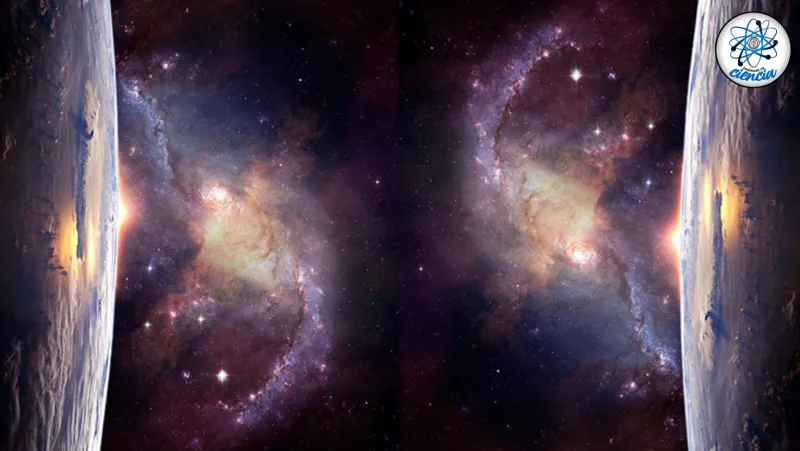The universe has always been a fascinating mystery for humankind. From the earliest philosophers to modern scientists, humanity has sought to understand the patterns and laws that govern the cosmos. In this sense, "Unraveling Cosmic Mysteries: Mathematics as the Code of the Universe" will unfold a fascinating journey of knowledge, where mathematics plays a leading role as a universal language for deciphering these enigmas.
Our journey will begin by exploring how mathematics, the exact science that challenges us so much in school, becomes a powerful tool for describing the behavior of celestial bodies, the expansion of the universe, and black holes. We will delve into the beauty of the equations that allow us to understand the cosmos and its incredible hidden order.
Finalmente, intentaremos desentrañar la relación entre la matemática y los misterios del universo. ¿Es la matemática una invención humana que casualmente funciona para describir el universo, o es ella misma parte del tejido del cosmos? Este diálogo entre matemáticas y universo nos llevará a plantearnos cuestiones fundamentales sobre la realidad y nuestra capacidad para comprenderla. No te pierdas este fascinante viaje a través del cosmos y sus enigmas, con la matemática como brújula. 🌌🧭🔢
Mathematics as the language of the universe
In the infinity of the universe, mathematics emerges as a kind of coded language that helps us decipher and understand its workings. Throughout the centuries, scientists have used mathematics as a tool to unravel the deepest secrets of the cosmos.

Symmetry in nature
The concept of symmetry, which is fundamental to mathematics, can be observed in many aspects of the universe. From the perfect geometric shapes of snowflakes to the symmetrical arrangement of stars in a galaxy, symmetry is a common feature in nature.
- For example, the laws of physics, such as Newton's law of gravity, are mathematical equations that describe how objects move in response to forces.
- Einstein's theory of relativity, which describes how space and time work, is also based on mathematics.
Mathematics in quantum theory
Quantum theory, which describes the behavior of particles at the subatomic level, is another area where mathematics plays a crucial role. The equations of quantum mechanics are intricate and complex, but they have allowed physicists to predict particle behavior with astonishing accuracy.

String theory and mathematics
In recent decades, string theory has emerged as a possible "theory of everything," one that could unify all the laws of physics into a single framework. String theory is a mathematically intensive theory that postulates that fundamental particles are not points, but vibrating strings.
Extra dimensions in string theory
A striking feature of string theory is that it requires the existence of extra dimensions, beyond the three spatial dimensions and one time dimension we know. These extra dimensions are necessary for the mathematics of string theory to work properly.
Mathematics in cosmology
Cosmology, the science of the evolution and structure of the universe, is another field in which mathematics plays an important role. Cosmologists use mathematics to describe the universe on a grand scale, including its expansion and the distribution of galaxies.
The standard cosmological model
The standard cosmological model, known as the LCDM model, is based on a series of mathematical equations that describe how the universe expands and how energy and matter are distributed within it. This model has proven extremely successful in predicting astronomical observations.
The limits of mathematics
Despite the undeniable usefulness of mathematics in physics and cosmology, there are limits to its ability to describe the universe. For example, although string theory is mathematically elegant, it has so far been difficult to test experimentally.
Mathematics and the mystery of the universe
Even with the help of mathematics, there are still many mysteries in the universe that we don't fully understand, such as the nature of dark energy and dark matter. These are challenges that scientists and mathematicians will continue to face in the future, in the constant effort to unravel the secrets of the universe.
Conclusion
In short, “Unraveling Cosmic Mysteries: Mathematics as the Code of the Universe” has demonstrated how mathematics is an indispensable tool in our effort to understand the universe. It has explored the fascinating intersection between these two disciplines, and how, through mathematical equations and codes, we can decipher the deepest secrets of the cosmos.
The article highlighted the beauty and complexity of the mathematical patterns that underlie the structures of the universe. It also emphasized how advances in mathematics, combined with astronomical observation, have revealed new dimensions of cosmic reality.
Therefore, it is clear that, on our journey of cosmic discovery, mathematics is our compass, our guide, and perhaps our best friend. In this sense, we are not only using mathematics to understand the universe, but we are also using the universe to understand mathematics.
Finalmente, aunque hemos logrado avances notables en nuestra comprensión del universo, aún queda mucho por desvelar. Por lo tanto, seguimos adelante, con nuestras ecuaciones en la mano y los ojos en las estrellas, en este emocionante viaje de descubrimiento cósmico. 🌌🚀🔭



